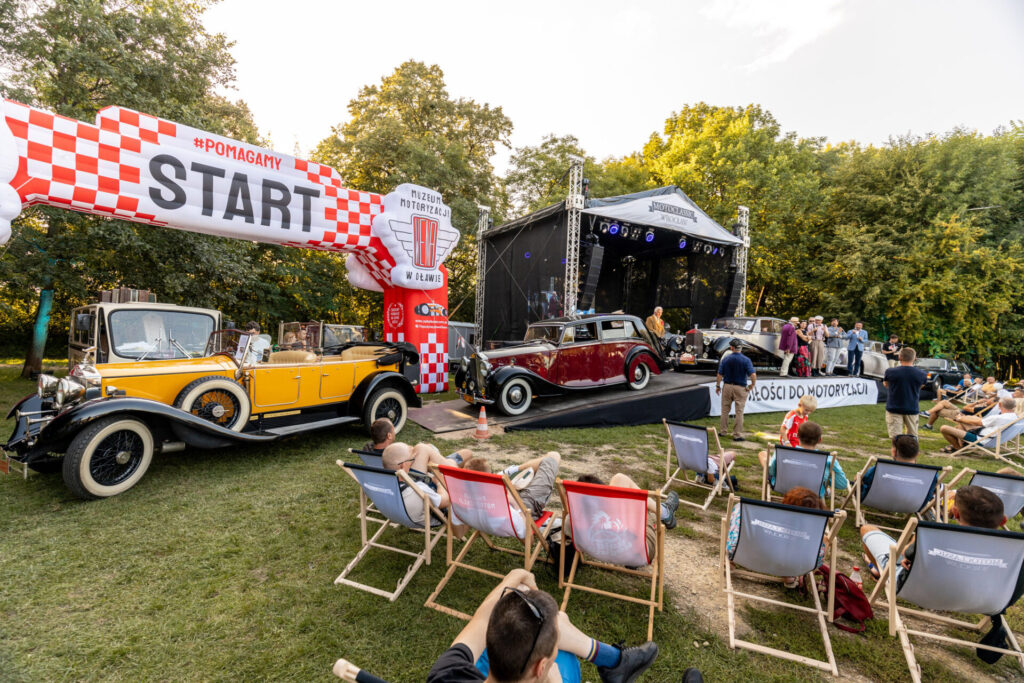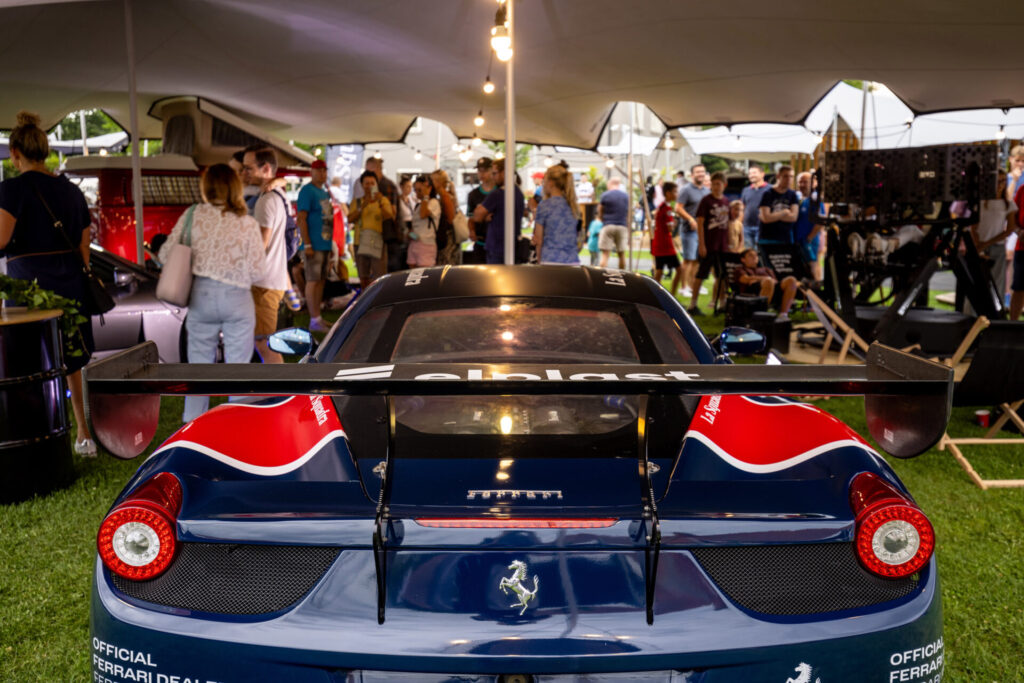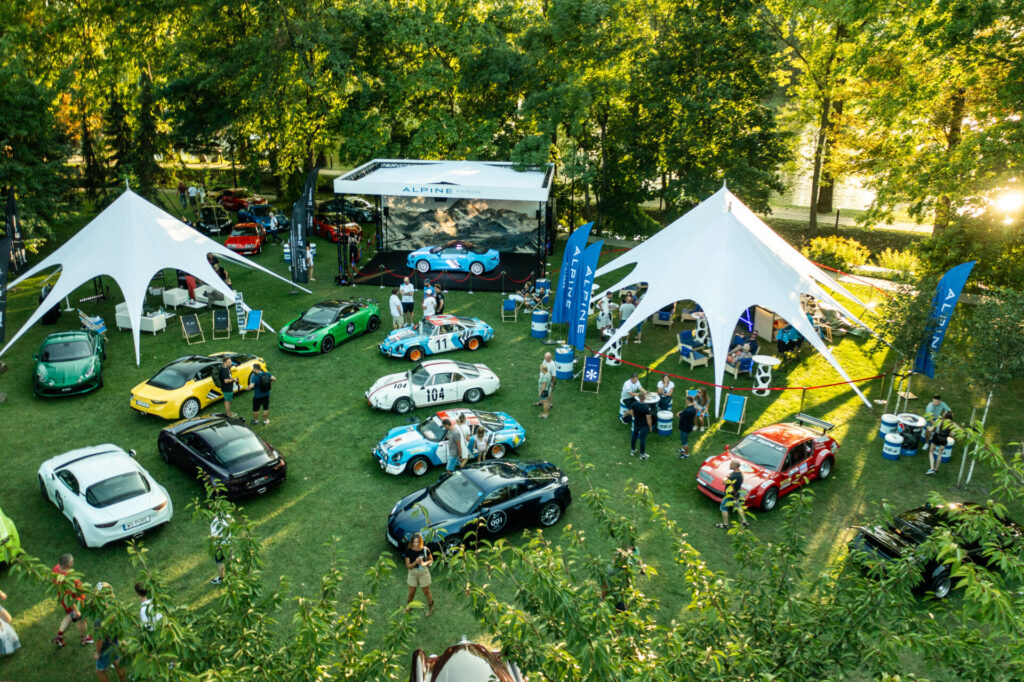The 10th edition of the largest classic car event in Lower Silesia attracted several hundred absolutely superb cars. For the entire weekend, they stayed on the meticulously prepared and magnificent grounds of Topacz Castle. But the sight that impressed me most was the one I encountered right outside the gate, before entering the venue.
Author: Mateusz Żuchowski, editor-in-chief of Classicauto
Arriving at this year’s Motoclassic Wrocław was very much like coming to a (well-organised) music festival. With me, thousands of people were heading in one direction on a Sunday morning. But what attracted them to this place was not a rock star or a young rapper, but a pre-war Rolls-Royce, an Alpine A110 with Polish history and a Ferrari SF90 Stradale!

Personally, I found it incredibly heartening. After all, motoring was going to be erased and forgotten, nobody was expected to be interested in it any more! Yet the organisers of Motoclassic Topacz proved otherwise, even though the event originates from a rather specialised formula of classic car elegance competition which is not very popular with the general public.
Today, Motoclassic is much more than that. In addition to the elegance contest, which is still the main feature of the event and which was judged by an Academy Award winner from Poland Allan Starski, the three days of the rally also featured a tourist rally, a regularity race and a performance test on a specially prepared 1.5 km section.

Still, the crucial change was to invite representatives of contemporary motoring to a 14th-century castle near Wrocław. Over the years, the concept of Motoclassic has been consistently expanded. Initially, the event was dedicated exclusively to pre- and post-war cars; then gradually models from later decades were included, until finally it reached the point where the rally is described as dedicated to cars from 1886 to 1990.
What does this mean in practice? Well, this means that after a three-year break caused by the coronavirus pandemic, Motoclassic again offered motoring fans a rare opportunity to see some of Poland’s finest collectible cars with their own eyes. Some of the oldest automobiles in Poland, dating back to the turn of the 20th century, were gathered in Wrocław. Among the pre-war models, the one that impressed me the most was the Bugatti T40 from 1928, the only one of its kind in Poland. The presence of a world-class collection of Lamborghinis said a lot about the developing state of the Polish collectible car market. The classic Rolls-Royce and Bentley models were also represented at a high level, as was the Maybach category, which admittedly consisted of three items but already bore the hallmarks of a collection.

I was pleased to see that a similarly informed mindset of mature collectors was also presented by exhibitors with contemporary supercars. They perfectly complemented the atmosphere of the event with such newcomers as the recently debuted BMW 3.0 CSL, the McLaren Elva and the Ferrari SF90 Stradale which, apparently, proves its worth in a setting like this equally well as on the race track.
The Ferrari 488 Challenge Evo, with which Szymon Ładniak is successfully competing in the Ferrari Challenge European Cup this year, appeared here in a similar context. Probably for many visitors, this was the first chance to get to know this twenty-year-old racer from Lublin, about whom there is sure to be a lot of buzz in the world of GT class racing.

The strong presence of the Ferrari brand was largely thanks to La Squadra, which presented a very high level on several fronts at Topacz Castle. The cross-sectional profile of the group’s activities was already evident at the stand, where space was shared by the Ferrari Roma and the first-generation Volkswagen Transporter, better known as the Bulli.

Particularly impressive was the zone of the Alpine brand included in La Squadra’s portfolio, which featured both the brand’s latest models (the A110 R has just arrived in Poland) and the high-end A110 classics. What I personally found to be the best highlight of this year’s Motoclassic was the reappearance in Poland, after half a century, of a car that competed in the Rally of Poland in the late 1960s and early 1970s, was driven on the streets of Warsaw, and even took one of Poland’s best rally drivers at the time, Błażej Krupa, to his wedding. The car was traced many years later in Germany and restored to its “Polish” specification, which itself is a topic worthy of a separate article.

So I was leaving the event encouraged by both the level of the Polish classic and collectible car market, which continues to advance in quality and quantity, and the increasing interest of the public. If you have not yet been to this event, it is definitely worth reserving time now for next August.